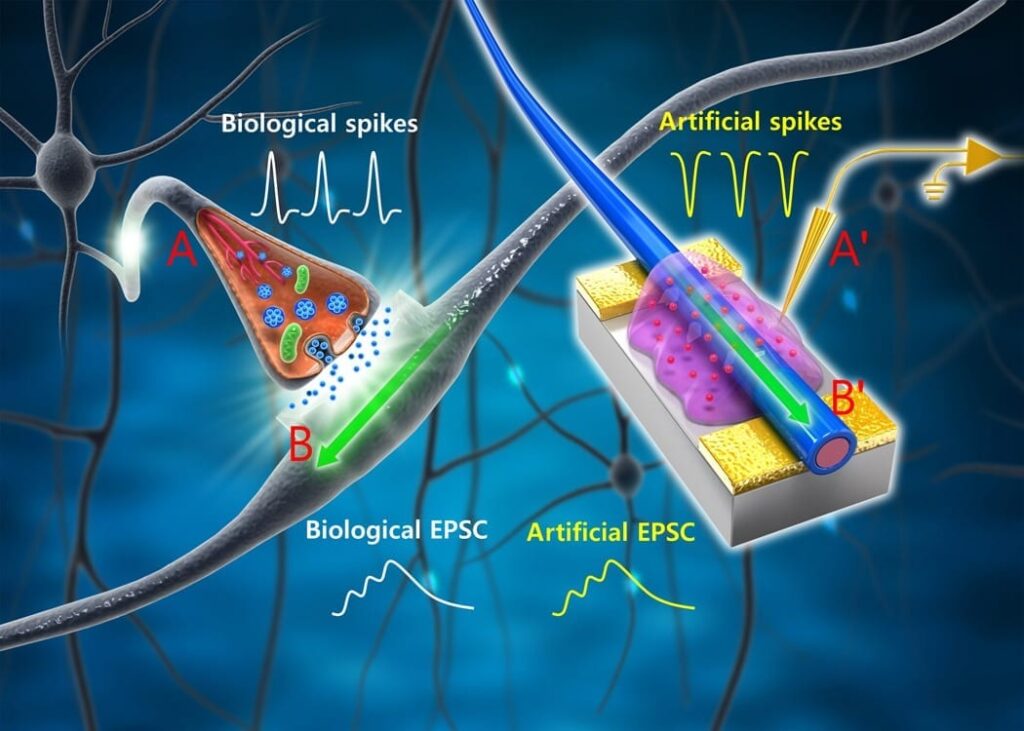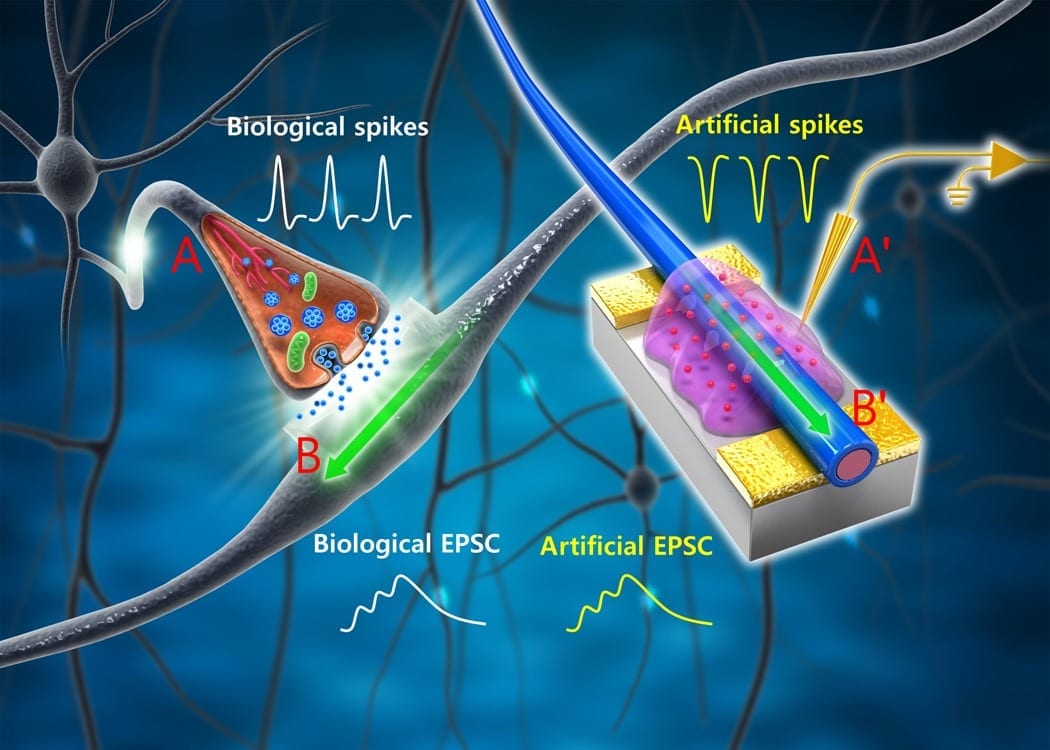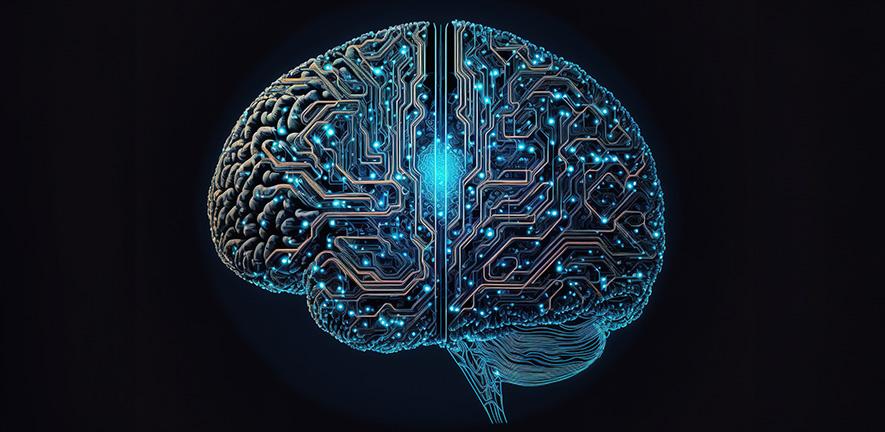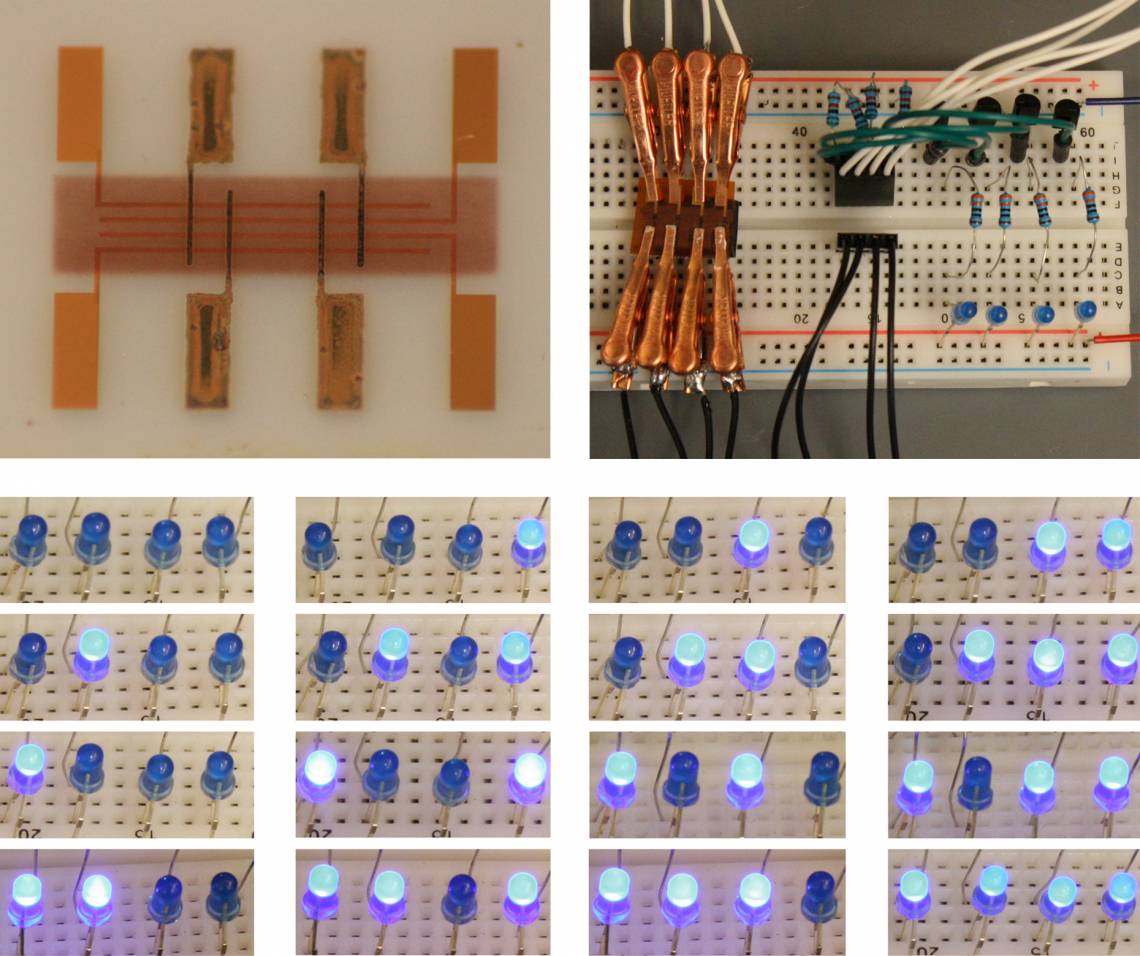
Researchers from the CNRS, Thales, and the Universities of Bordeaux, Paris-Sud, and Evry have created an artificial synapse capable of learning autonomously. They were also able to model the device, which is essential for developing more complex circuits.
The research was published in Nature Communications on 3 April 2017.
One of the goals of biomimetics is to take inspiration from the functioning of the brain in order to design increasingly intelligent machines. This principle is already at work in information technology, in the form of the algorithms used for completing certain tasks, such as image recognition; this, for instance, is what Facebook uses to identify photos. However, the procedure consumes a lot of energy. Vincent Garcia (Unité mixte de physique CNRS/Thales) and his colleagues have just taken a step forward in this area by creating directly on a chip an artificial synapse that is capable of learning. They have also developed a physical model that explains this learning capacity. This discovery opens the way to creating a network of synapses and hence intelligent systems requiring less time and energy.
Our brain’s learning process is linked to our synapses, which serve as connections between our neurons. The more the synapse is stimulated, the more the connection is reinforced and learning improved. Researchers took inspiration from this mechanism to design an artificial synapse, called a memristor. This electronic nanocomponent consists of a thin ferroelectric layer sandwiched between two electrodes, and whose resistance can be tuned using voltage pulses similar to those in neurons. If the resistance is low the synaptic connection will be strong, and if the resistance is high the connection will be weak. This capacity to adapt its resistance enables the synapse to learn.
Although research focusing on these artificial synapses is central to the concerns of many laboratories, the functioning of these devices remained largely unknown. The researchers have succeeded, for the first time, in developing a physical model able to predict how they function. This understanding of the process will make it possible to create more complex systems, such as a series of artificial neurons interconnected by these memristors.
As part of the ULPEC H2020 European project, this discovery will be used for real-time shape recognition using an innovative camera1 : the pixels remain inactive, except when they see a change in the angle of vision. The data processing procedure will require less energy, and will take less time to detect the selected objects. The research involved teams from the CNRS/Thales physics joint research unit, the Laboratoire de l’intégration du matériau au système (CNRS/Université de Bordeaux/Bordeaux INP), the University of Arkansas (US), the Centre de nanosciences et nanotechnologies (CNRS/Université Paris-Sud), the Université d’Evry, and Thales.
Learn more: Electronic synapses that can learn : towards an artificial brain ?
[osd_subscribe categories=’artificial-brain’ placeholder=’Email Address’ button_text=’Subscribe Now for any new posts on the topic “ARTIFICIAL BRAIN”‘]
The Latest on: Artificial brain
[google_news title=”” keyword=”artificial brain” num_posts=”10″ blurb_length=”0″ show_thumb=”left”]
via Google News
The Latest on: Artificial brain
- Zoë Hitzig is Generative and Intelligent. Is She Artificial?on April 30, 2024 at 12:27 am
Much like a large language model, the Zoë Hitzig available by Google search is so prolifically published that she seems capable of writing something about anything — from poetry to economics to ...
- Apple targets Google staff to build artificial intelligence teamon April 29, 2024 at 9:01 pm
Phone maker also recruits generative AI experts into secretive Zurich lab as it prepares fightback against Big Tech rivals ...
- Scientists create artificial brain cell from salt and water mixon April 29, 2024 at 8:03 am
In a groundbreaking study, scientists have engineered artificial neurological connections known as synapses using a simple solution of water and salt. This innovation could lead to the creation of ...
- Innovative Salt and Water Brain Cells Promise a Future for Iontronics in Computingon April 28, 2024 at 11:03 pm
Groundbreaking achievements in the scientific community have led to the creation of brain cell simulations known as synapses. These have been ingeniously structured using water and salts, akin to the ...
- We Just Took A Big Step Closer To A Human Brain-Inspired Computeron April 28, 2024 at 5:00 pm
This is akin to what a real brain synapse does. "While artificial synapses capable of processing complex information already exist based on solid materials, we now show for the first time that this ...
- Giant artificial brain computer unboxed at Sandia labson April 28, 2024 at 1:15 pm
Sandia National Laboratories received a brain-based computing system from Intel Corp. that has 1.15 billion artificial neurons, aiming to advance large-scale brain-inspired computing. This innovative ...
- 'Inspired by the human brain': Intel debuts neuromorphic system that aims to mimic grey matter with a clear aim — making the machine exponentially faster and much more power ...on April 27, 2024 at 10:40 pm
Intel's Hala Point is the world's largest “brain-based” computing system with 1.15 billion artificial neurons.
- AI helps researchers uncover gut-brain interactions in Alzheimer'son April 26, 2024 at 10:00 am
AI technology reveals more information about the gut-brain health link in Alzheimer's, suggesting new pathways for research around treatments.
- Scientists use salt, water to prove human brain-like computer can existon April 26, 2024 at 4:13 am
The artificial synapse known as an iontronic memristor functions as a microchannel filled with a solution of water and salt.
via Bing News











